Acoustic CFD Simulation (LES) of airflow over Cylinders in 4 Different Positions, Ansys Fluent Training
$200.00 $100.00 Student Discount
- The problem numerically simulates the Acoustic airflow over Cylinders in Different Positions (LES) using ANSYS Fluent software.
- We Mesh the model by ANSYS Meshing software.
- The mesh type is Structured, and the element number equals 2000000.
- We perform this simulation as unsteady (Transient).
- We use the Ffowcs-Williams & Hawking’s equations to model Acoustic in the present work.
Click on Add To Cart and obtain the Geometry file, Mesh file, and a Comprehensive ANSYS Fluent Training Video.
To Order Your Project or benefit from a CFD consultation, contact our experts via email (info@mr-cfd.com), online support tab, or WhatsApp at +44 7443 197273.
There are some Free Products to check our service quality.
If you want the training video in another language instead of English, ask it via info@mr-cfd.com after you buy the product.
Description
Description
In this project, the airflow Acoustics over Cylinders in Different Positions (LES) has been simulated, and the simulation results have been investigated using ANSYS Fluent software. We perform this CFD project and investigate it by CFD analysis.
Acoustics is a science that deals with the study of mechanical waves in gases, liquids, and solids, including vibration, sound, ultrasound, and infrasound. It concerns production, control, transmission, reception, and sound effects.
Structured mesh in ICEM is modeled. The number of elements in each file is about 2000000. There is a Boundary layer around cylinders.
Also, due to the nature of the present problem, the transient solver has been enabled.
Acoustic CFD Simulation Methodology
This acoustic project simulates sound pressure waves around cylinders in 4 different positions (4 cases) using Ansys Fluent software.
In general, sound waves within a fluid are caused by vibrations and reciprocating movements of the fluid layers. For example, when a layer of air moves forward in a certain direction, the next fluid layer pushes itself forward, and the layer returns to its original position.
These reciprocating movements of the air layers must continue until the energy within the airflow is depleted. The sound is produced if this number of reciprocating movements reaches more than 16 times per second.
Definitive density is equivalent to air density, i.e., 1.225 kg / m3, air velocity is 69.2 m/s, and the LES smagorinsky model simulates flow turbulence.
Also, Ffowcs-Williams & Hawking’s equations are used to model acoustic. Moreover, the SST k-omega model is used to solve turbulent fluid equations.
Acoustic CFD Simulation Conclusion
At the end of the solution process, two-dimensional contours related to the pressure at different configurations are obtained. As can be seen, Sound Pressure Level plots of different points in geometry are represented.
The exact coordinate of points is as below:
Down point (0 -0.15m 0)
First point (0.4 0 0)
Second point (0.7 0 0)
The distance between the center of circles in the X and Y direction is 100mm.
As a result, it was obtained that the sound pressure level is higher closer to the cylinder.
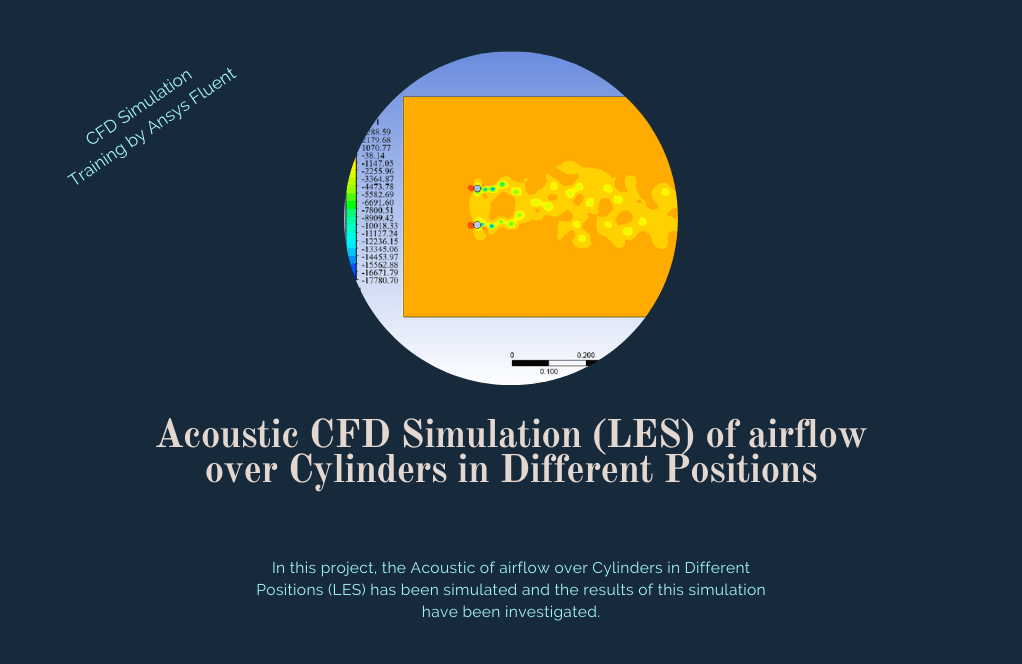
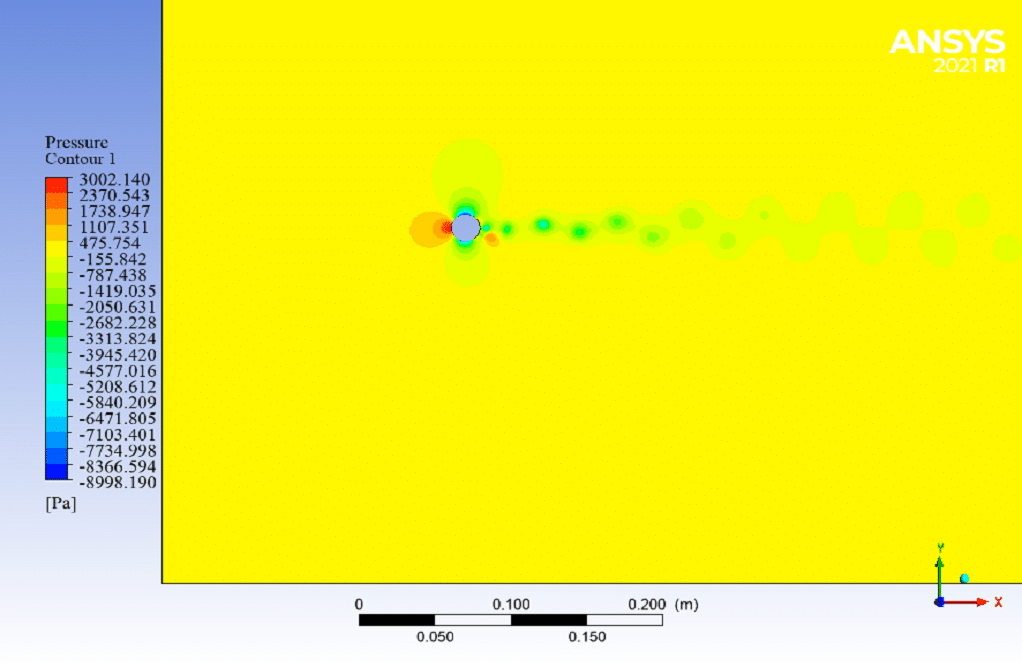
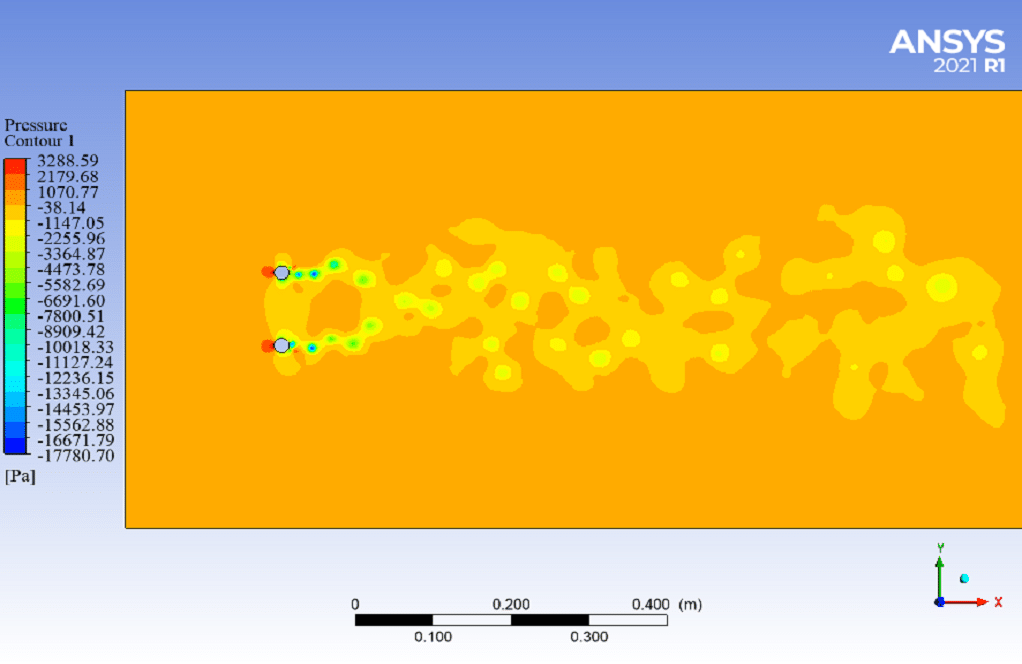
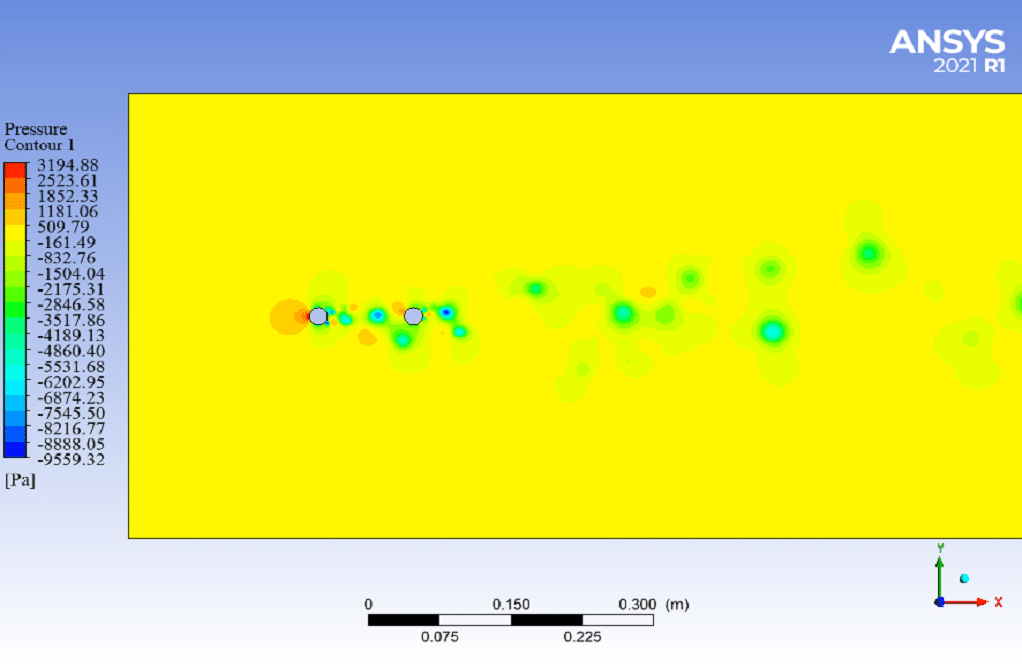
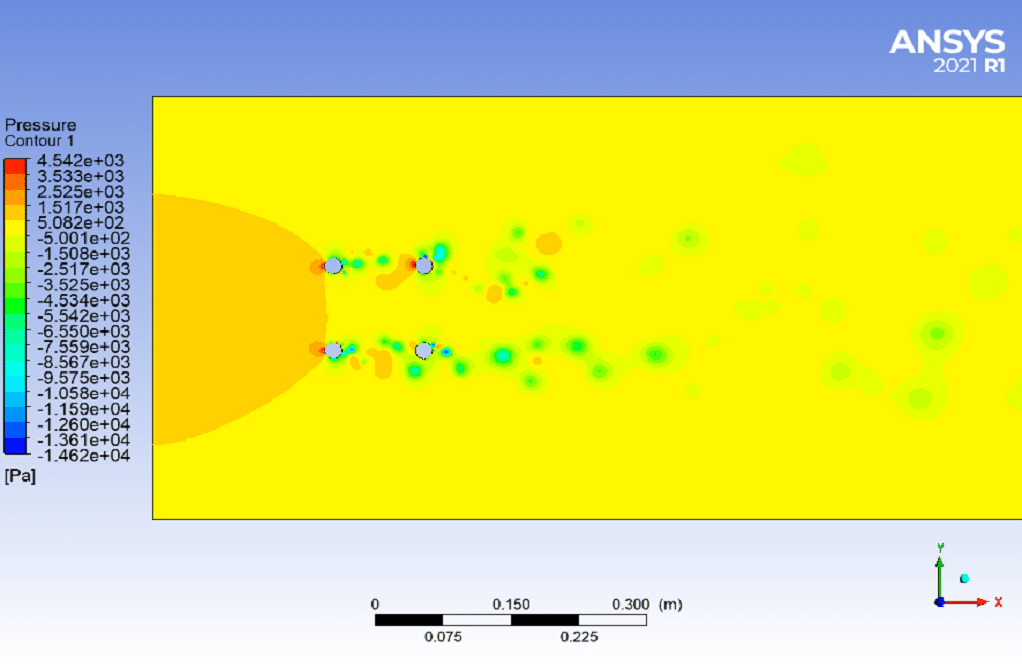
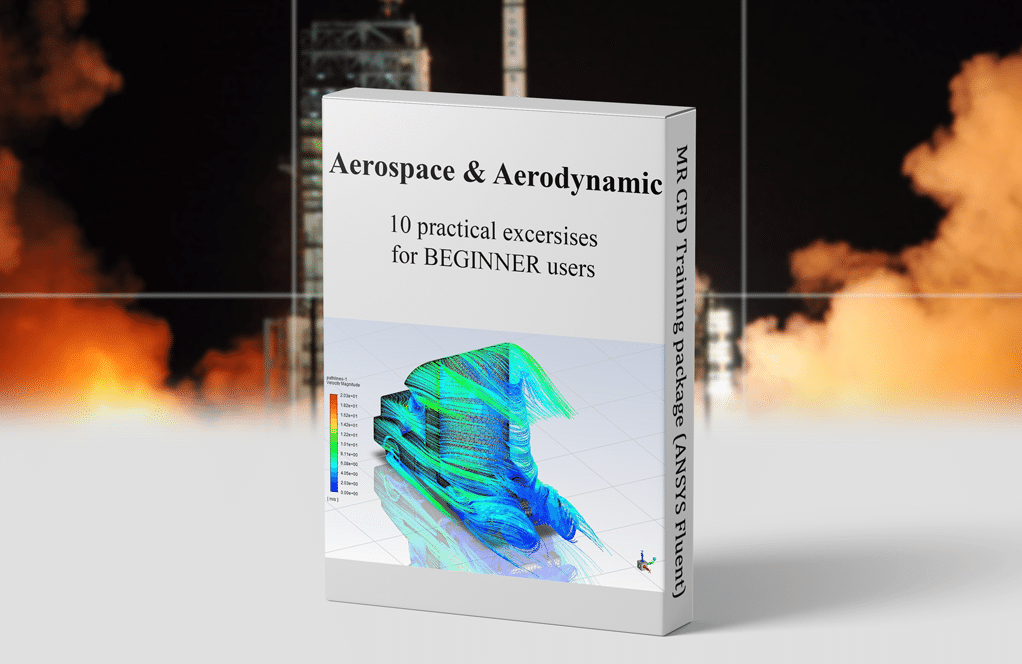
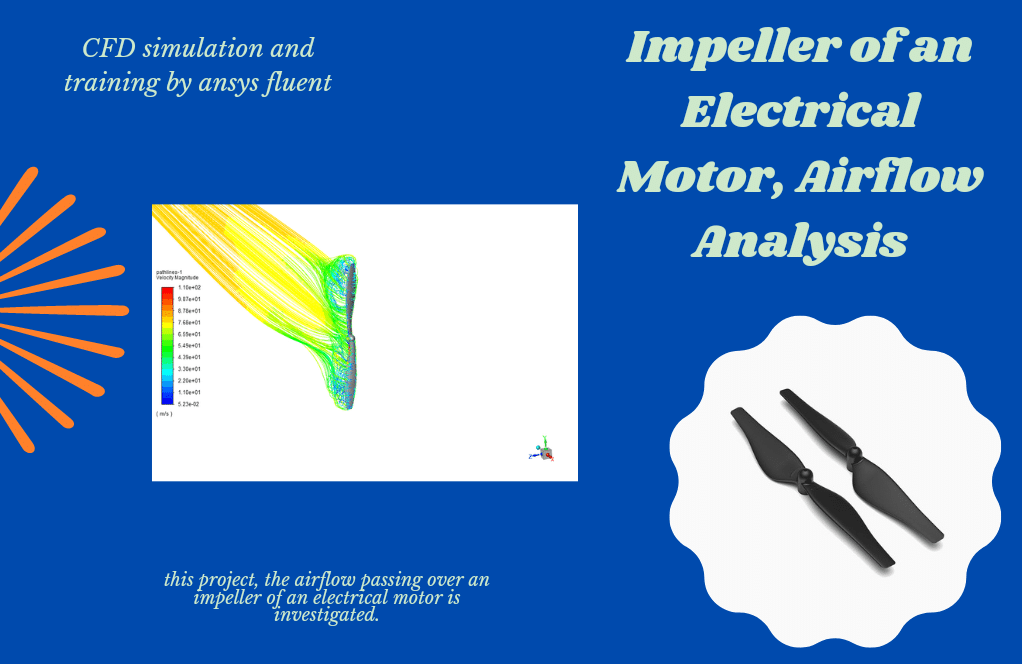
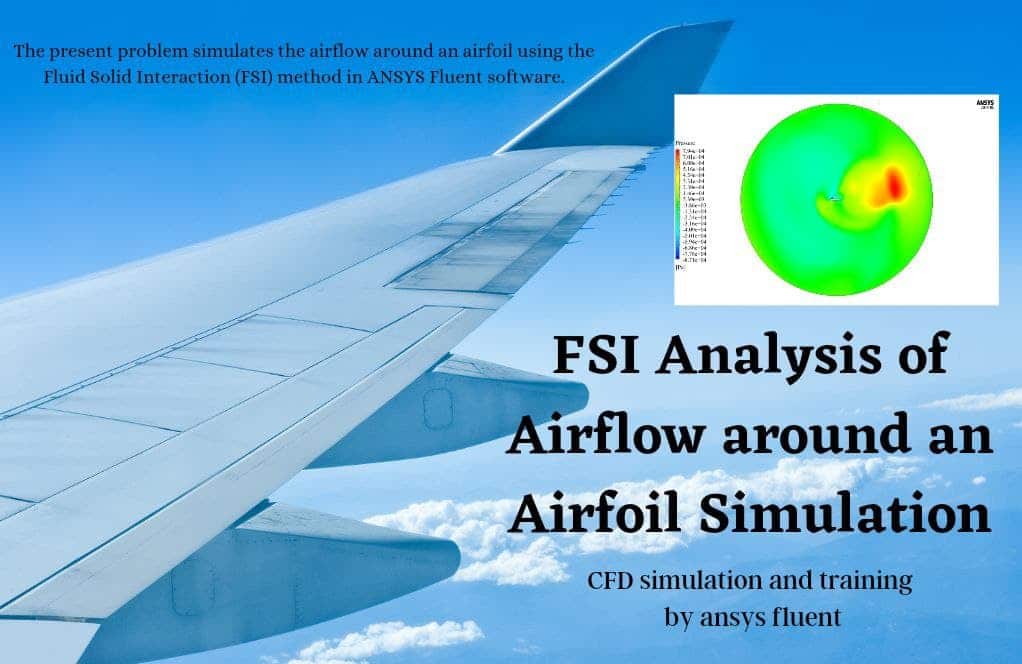

Reviews
There are no reviews yet.